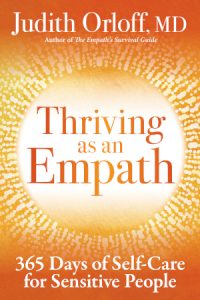What I Am (and You Are Too!)
I feel I am a conscious entity in which a simulation, constituting of gross and subtle objects/things, is appearing. The gross (aka physical) objects include a body and a world entering through the sense organs, in the form of gross sights, sounds and sensations. The subtle objects include thoughts and emotions (that are also just thoughts loaded with feelings) in the form of subtle sights, sounds and sensations. These objects are appearing directly in me, otherwise I would not have been able to know/experience them. It’s important to note that even though I experience a body and a world directly, I do not experience a so-called mind (which is actually a composite term used for the mind-intellect-memory-ego combo) directly. The mind-composite is only implied by the type of thoughts that appear in me. To clarify, I do not experience any specific object that I can point to and say that is the mind or the intellect or the memory or the ego. The mind is implied due to some of the thoughts being reactionary and habitual, the intellect is implied due to some of the thoughts being intelligent and analytical, the memory is implied due to some of the thoughts being of past remembrances, and the ego is implied due to some of the thoughts containing an “I” or “my” identity. I only experience these thoughts directly, along with the corresponding parts of the brain that feel active or affected during those thoughts, and never the mind-composite directly.
I further feel that the simulation that is appearing in me is just that – an appearance. I am actually untouched and unaffected by it. Even though I experience certain sensations that can be labeled as pleasant or unpleasant, they are just gross objects appearing in me but they do not affect me. Certain sensations are felt in the body like the feelings of hunger, thirst, itch, ache, etc.. And what we call mental feelings are also nothing but physical sensations felt in the brain tissues. E.g. the feeling of stress is just some brain tissues getting overly strained due to lot of thinking and the feeling of anger is just some brain tissues getting overly heated. So all mental feelings are nothing but physical sensations of brain tissues which are also sometimes accompanied with certain bodily sensations like palpitations, sweating, shallow/rapid breathing, etc. All these sensations just appear in me as gross objects and I am untouched by them. I am just a witness of them. I am like a screen that is unaffected by the movie playing on it, irrespective of how pleasant or unpleasant the movie might be.
When the objective appearances vanish and the simulation stops in deep absorption, I experience my real nature as pure existence-consciousness-bliss (sat-chit-ananda). I do not feel any limitation of time, space, object, etc. in that state. This makes me believe that I am actually unlimited and formless but the simulation imposes an artificial feeling of being contained within a body form with all corresponding limitations. Other people also report similar simulatory experiences, but these simulations are not completely independent. They seem to share common gross objects and events which leads to the conclusion there is just one underlying reality. You, I and others are actually that one reality and not separate entities.
So, even though I am one infinite partless reality, I somehow seem to experience countless parallel simulations simultaneously as separate individuals – each forming a different viewpoint of one big simulation called the universe. It seems like the universe is one gigantic stream of events flowing constantly from one moment to another, and that I know everything that is to be known in this universe from different viewpoints. The individual simulations seem to represent different cross-sections of the universe as experienced from the viewpoints of different individuals. Or maybe there are only these individual simulations and the feeling of one universe is only incidental as these simulations seem to be interconnected sharing common gross objects and events. In either case, I am one reality of the nature of existence-consciousness-bliss with an uncanny ability of generating and focusing at countless simulations and experiencing them simultaneously and separately.
But why should I be doing this? Why can I not just remain as pure existence-consciousness-bliss without generating and experiencing these simulations within me?
Here’s the best explanation I have found:
Take the case of the eyes as an illustration. Their nature is to see. Now consider the sky. It’s so vast it cannot be seen in entirety by these tiny eyes. But when you turn your head upwards, the eyes try to see that which cannot be seen in entirety. The result is an error and the sky looks like a hemispherical dome (which it is not) to the eyes. In the same way, the nature of consciousness is to experience, so it tries to experience the one and only reality that actually exists which is itself. But the reality is infinite and not experiencable in entirety. When there is an attempt to experience the inexperiencable, an error is generated in the form of countless interconnected simulations – each with an experiencer, various experienced objects and their corresponding experiences. The consciousness aspect of the reality appears more prominently as the experiencers, the existence aspect appears more prominently as the experienced objects, and the bliss aspect appears more prominently as the corresponding experiences. So all these countless simulations are just an error produced by the very nature of the infinite reality trying to experience itself. These simulations manifest the infinite reality in a finite way so the consciousness of the experiencers, the existence of the experienced objects, and the bliss in the experiences are all finite, of varying degrees and transient instead of being infinite and permanent. Moreover, since infinite consciousness also implies infinite intelligence, these simulations are of very high quality following various types of laws both at micro and macro cosmic levels with lot of systematism and interconnectedness. They are so flawless and well-structured that they appear to be very real. But it’s important to note that these simulations are absolutely harmless as they are not actually real and are just appearances in the one unblemished reality that I am (and everyone is)!
Another question that might arise is that once this understanding of being the one infinite reality dawns upon a particular individual, what makes him/her continue to experience the simulation and act through a body?
The answer is quite simple. The appearance of experience and action is just part of the simulation and going on of its own accord. The infinite reality is not actually doing anything deliberately. The simulations simply appear in it by its very nature and keep going, irrespective of whether the understanding of being the one underlying reality has dawned upon a particular individual or not. The only difference it would make is that the actions of an individual after this understanding has dawned would appear to be in accordance with that understanding.
Note: You can replace all the occurrences of words “I” & “me” with “you” and “my” with “your” in the above article and it will still be true! I am just trying to take a step back from the apparent simulation and revel in the underlying reality which you, I and everyone actually is. I would highly encourage you to try it too. Its extremely liberating!
(This article was cross-posted from happinessjourney.net/post/190519907835/what-i-am-and-you-are-too)










 An excerpt from Beneath the Surface by Kristi Hugstad
An excerpt from Beneath the Surface by Kristi Hugstad Kristi Hugstad is the author of Beneath the Surface: A Teen’s Guide to Reaching Out when You or Your Friend Is in Crisis. Ever since her husband completed suicide in 2012, after years of struggling with clinical depression, by running in front of a train, she has dedicated her life to helping to abolish the stigma of mental illness and suicide. A certified grief recovery specialist, Kristi frequently speaks at high schools. Visit her online at https://www.thegriefgirl.com.
Kristi Hugstad is the author of Beneath the Surface: A Teen’s Guide to Reaching Out when You or Your Friend Is in Crisis. Ever since her husband completed suicide in 2012, after years of struggling with clinical depression, by running in front of a train, she has dedicated her life to helping to abolish the stigma of mental illness and suicide. A certified grief recovery specialist, Kristi frequently speaks at high schools. Visit her online at https://www.thegriefgirl.com. **Excerpted from “Thriving as an Empath: 365 Days of Self-Care for Sensitive People” (Sounds True, Oct. 22, 2019)
**Excerpted from “Thriving as an Empath: 365 Days of Self-Care for Sensitive People” (Sounds True, Oct. 22, 2019) Judith Orloff, M.D., is a New York Times bestselling author, a member of the UCLA Psychiatric Clinical Faculty, and has a Facebook Empath Support Community with more than 6,000 members. She has been featured on The Today Show, CNN, and in Oprah Magazine, the New York Times and more. Her new book,
Judith Orloff, M.D., is a New York Times bestselling author, a member of the UCLA Psychiatric Clinical Faculty, and has a Facebook Empath Support Community with more than 6,000 members. She has been featured on The Today Show, CNN, and in Oprah Magazine, the New York Times and more. Her new book,  For those looking toward industries poised to lead the growth charge over the next five-to-ten years, one need look no further than telehealth and telemedicine. These global markets are expected to exceed $185 million from 2019 through 2026, according to the new Advanced
For those looking toward industries poised to lead the growth charge over the next five-to-ten years, one need look no further than telehealth and telemedicine. These global markets are expected to exceed $185 million from 2019 through 2026, according to the new Advanced  For students from K-12 through college-level requiring speech therapy in particular, remote access to professional services and practitioners will clearly become more ubiquitous. In fact, “the demand for speech-language therapists is already outpacing the supply in some cities,” says Licensed Speech Pathologist Orna Kempler-Azulay, president of
For students from K-12 through college-level requiring speech therapy in particular, remote access to professional services and practitioners will clearly become more ubiquitous. In fact, “the demand for speech-language therapists is already outpacing the supply in some cities,” says Licensed Speech Pathologist Orna Kempler-Azulay, president of